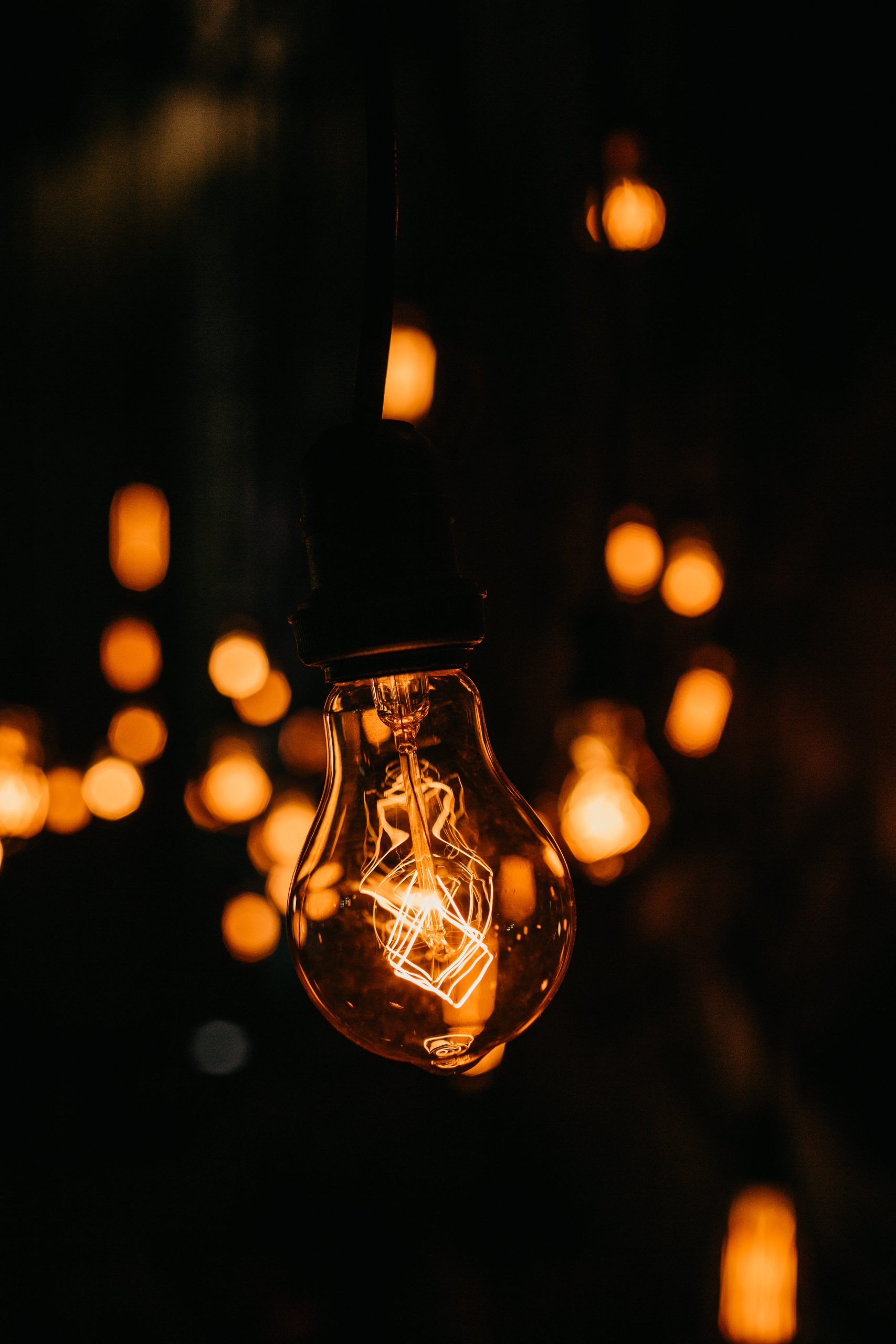Faye Robinson’s bright ideas for sustainable office design
14 Nov 2023
14 Nov 2023
Embracing sustainability in your workspace is a win-win – for the environment and your pocket, as energy efficiency often translates to cost savings.
But how do you go about making your office greener? Faye Robinson is our go-to expert on this topic. She’s the founder of Treacle Studio, where innovation meets eco-consciousness to create lighting designs people (and the planet) love.
Our Manchester office is a glowing example (pun intended) of Faye’s talent. In light of the European Week for Waste Reduction, we invited her to share her sustainable office design insights.

“I’ve worked in lighting design for twenty years,” Faye starts. “During this time, I worked as an in-house designer and led design teams in the construction industry.
“While I enjoyed my work, something bothered me. The construction world I knew was all about tearing down the old and quickly bringing in the new. It was wasteful like we were just throwing things out and using new stuff non-stop.
“There was another problem too: greenwashing. This is when companies claim they’re ‘green’ but don’t really act on it. Some of the manufacturers we used were doing just that.”
Starting Treacle Studio changed things. “Having my own business meant I could focus on sustainability from the start. It’s a key part of our work. We not only incorporate it into our designs but also educate clients on why it’s important. It helps that we’re a smaller business. It gives us the agility to genuinely embrace and act on eco-friendly values.”
“Sustainability begins by valuing what you already have,” Faye says. “Whether it’s desks in an office or existing lighting, the first step is to see how you can repurpose and reduce your need for new materials. It’s not just about buying eco-friendly products but understanding the real journey of your products.”
“We have to remember that resources aren’t endless. It’s up to us to make wise choices today for a sustainable future.”
“It helps to have the right guidelines when designing sustainable spaces,” Faye elaborates. “Take TM66, for instance. This framework is a godsend for creatives, manufacturers and anyone using a space. It ignites sustainable thinking from a project’s inception. It nudges us to prioritise reuse, cut down on new materials and holistically view the entire design and installation phase, always with the environment in mind.”

Faye walks us through her approach to our lighting redesign: “First, I tapped into the team’s perspective with a survey about the existing lighting. Every voice mattered, guiding me towards a design that would resonate with the team.
“My next step was learning the space’s history to pinpoint the old lights’ manufacturer. I reached out to them, saying: ‘These lights are yours. How can we collaboratively repurpose or reuse parts of them?
“Luckily, the manufacturer had already explored ways to update their older products. We could maintain the metal body of the luminaire (the complete lighting unit) and update only the necessary internals. They suggested adding a new LED module that would replace the existing fluorescents.”
Faye continues, “With the luminaire’s metal body intact and the old lamps recycled, our next step was to source sustainable modules. That’s when I thought of LumiAdd. I’ve worked with them in the past, and they do exciting stuff with 3D printing and have this circular economy mindset which I love.
“We selected LumiAdd’s downlight and wall washer range for Tyler Grange’s office. The reflectors, which push the light where it’s needed, have been 3D printed.

“The reflectors are also made from sugarcane polymer, a biodegradable material sourced from renewable sugarcane, which offers a more sustainable alternative to traditional plastics. Bio-based plastics use 33% less CO2 than petrochemical plastics and 97.5% less CO2 than aluminium.”
“What’s really great too is that LumiAdd produces everything locally in the UK. This has the added benefit of a smaller carbon footprint. Plus, they have this buy-back program ensuring their luminaires can be returned and repurposed.”
Faye offers her key advice for businesses wanting to create more sustainable offices: “First, take a good look around your office. Write down what you have. It’s simple: know what’s in your space. If you ever think of changing things up or moving stuff around, this list helps you decide what to keep, what to give away or what to change. It might seem like a small step, but it makes a big difference when it’s time to redesign your office.”
Building on that, she says, “I’ve also noticed smaller companies doing some of the best work in this area. They’re quick to adapt and they’re coming up with smart ways to be more eco-friendly, especially with the materials they use.
“So, if you run a smaller business, act now. Look into how you can incorporate sustainable practices and materials into your workspace. You have the power to make a difference, so start exploring your options.”

She not only shared valuable insights, but she also transformed our Manchester office into a sustainable haven. Thanks to her, we now have a workspace that’s both inviting and environmentally friendly.
Looking to brighten up your workspace with sustainable lighting? Reach out to Treacle Studio at 0161 818 8488 or hello@treaclestudio.com. And for additional sustainability tips for your business, be sure to follow us on Instagram and LinkedIn.